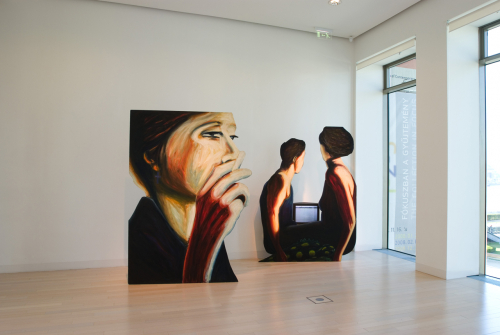Zbigniew Libera is an autodidactic Polish multimedia artist. In the films he shot between 1983 and 1990 he deals with the uncertainties of life, the frailty of the human body, and the importance of spiritual growth.
The artwork purchased by Ludwig Museum in 1999 consists of a real bed-table and a TV-set which shows a video. In the lower right corner of the table, on an open shelf is a dazzling quantity and array of medicines. The creation of the artwork started when Zbigniew Libera noticed the continual, monotonous noise coming from the neighboring apartment, produced by an old lady there who was constantly turning her chamber pot. Then through the door between the two apartments the artist discovered Regina G, the sick, blind, weak old woman who had to stay in bed all day, and whose only movement was the ritual-like turning of her chamber pot. The unconscious activity of the old woman (strongly sedated by medicines, and faint due to her illness) proved to be a religious ceremony: she substituted her rosary – which was taken away from her as a precaution – with this object. The chamber pot, besides its original function of containing of excrement, became invested by Regina G with the function of a mystical, reverential object.
The ritual and spiritual process was documented by Libera without the old lady’s knowledge. The stirring scene can thus be seen only by the artist and the viewer, since the film’s main actor is not conscious of her own compulsive actions, although these movements are the only things linking her to the outer world and life.
Regina G may be interpreted as the allegory of frailty and mortality, subjects that are considered taboo in Polish society. Furthermore, Libera quotes Michel Foucault who was strongly skeptical of the medicalization of society. We witness the damaging, mind-strangling consequences of over-medicalization which make humans defenseless and isolated

